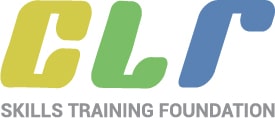Skill development is a continuous process in every business. It is one of the biggest challenges that every country has to face. In the case of India which has a huge population, this becomes more challenging. With the current focusing on skills development programmes, it is evident that they know the importance of this process. Now the other side of this process is that how you can evaluate the impact of these skills development programs, workshops and training camps. There should be some kind of skill development indicators, their evaluation process, results and their impacts on the overall programme. So in this blog post, we will share all the relevant points.
What does skills development indicators evaluation involve?
It is essential to know the degree to which various skills development programmers, schemes & workshops contribute to getting the desired results relevant to employment, skill set improvement and its impact on social and economic conditions of people, business houses and the society as a whole.
It is very clear that implementation and processes are significant; the efficiency of such mechanisms should be determined & evaluate in terms of results. Making qualitative and quantitative indicators of accomplishment of the targets helpful in the understanding of success, issues, and their impact.
Interventions for skills development programs generally used to check the outcome as per expectations, so that if the shortcomings are found, then the required steps should be taken to resolve them.
Four different indicators can be used in the evaluation process. These different levels of indicators will determine the overall impact of the skill development programme.
Evaluation level – Reaction or satisfaction of trainees. This is the primary steps in knowing what are the workforce is happy with the lessons they are getting and It is the first stage of an effective training. It moderately focuses on the resource usage as per trainee requirement.
What is evaluated? – This will determine the reaction of the trainees. What they feel about the content of the programme, the performance of trainers, the methodology being used, other interaction aspects in general terms.
How is the information gathered? – The information is collected by asking few questions from the trainees after the completion of the program.
Learning – When you check the first results of the training programmes which includes the basic goals of the skill programmes, If the trainee has not learned the basic things, there is no meaning in moving on to the next one.
What is evaluated? – In this process, the effectiveness of the programmes is checked by doing evaluation tests and getting a certain set of skill.
How is the information obtained? – This is done by taking various tests, trainer feedback and other general modalities for the basic evaluation.
Applicability – This will determine that which type of training is applied to which workgroup in the training workshop.
What is evaluated? – In this process, the impact of the courses being offered will be taken into consideration that whether the lessons provided are transferred to labor performance.
How is the information obtained? – This is simply done by questionnaires or surveys for trainees.
Return on investment (ROI) – This is one of the major indicators on the basic economic values and its estimation of the profitability of the investment.
What is evaluated? – This is simply the return on the investment being done during the training period and obtained benefits, in monetary terms.
How is the information obtained? – In order to calculate the total profitability, results are valued on the basis of costs.
When addressing impact evaluation, the following must be noted:
Relative Changes: it is about knowing the changes which come after a specific policy or programme at different levels like social level, enterprise or on workforce participants.
Impact Evaluation – The impact evaluation is done by comparing the original situation and what happens once the training has completed. The changes which came after the completion of the skill programme.
To measure the impact of skills development on society, the following questions should be asked:
- Has the skills development programmes improved?
- Have a different type of people like youth, women, had more chances to get the training?
- Has skills development allowed people to get upright jobs?
In order to measure the impact of skills development programmes, business houses can consider:
- Are positive changes appearing in working conditions?
- Have accidents & strikes at work been reduced?
- Has the quality of the products improved with the same raw material?
To calculate the impact of skill development program on people, the following questions should be asked:
- Has skill training been useful to get a job?
- Has net salary improved as a result of the newly added skill sets?
- What changes have been implemented for the workforce welfare?
Organizations who are looking to use skills development programmes should prepare all these questions into account so that proper evaluation can be done on various parameters.
Why should skill development indicators be evaluated?
The need for impact evaluation of skill development indicators is being increasingly recognized in various sectors. It is very essential to know the skills development programmes’ results & impacts to make a proper decision on the basis of their quality, significance, and equity.
This process required a lot of data and time resources to make skill development indicators data relevant and useful. Hence they are relatively complex and required extra efforts to pull out the data.
Why should skills development indicators be evaluated?
Information generated by evaluation indicators supports in making a final call. This also helps in to adjust, reduce or replace the current programs and skill sets. It is useful for programme managers, and people in order to:
- Understand the requirement and to check whether the training system is supply-oriented or normally a response to the generated demand.
- Supply vital inputs in the creation of a better programme for skills development.
- Improve the management & implement processes.
- Promote accountability and transparency in the implementation of the skill programs and allocation of resources.
- Know to improvement level in the total results and ROI as well
- Establish a culture of permanent learning and skills development programs.






